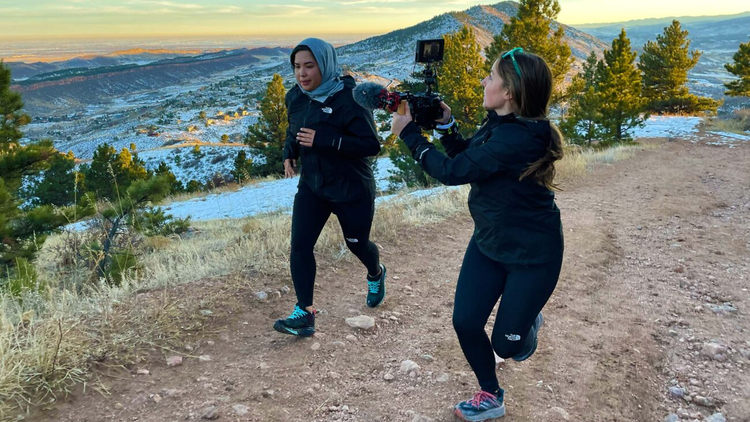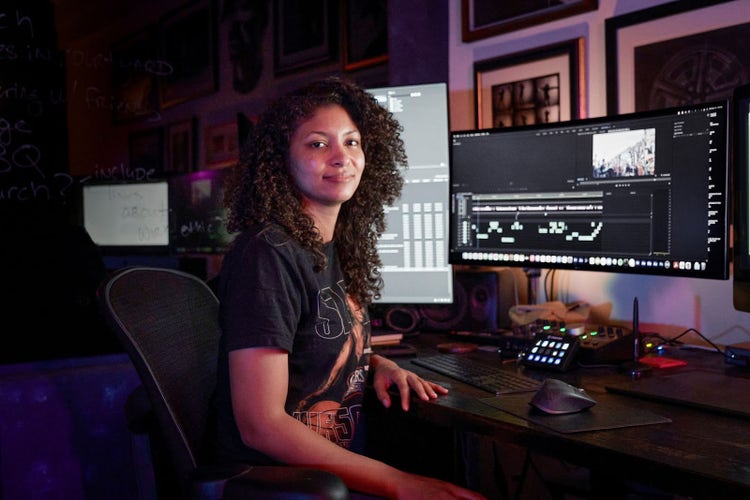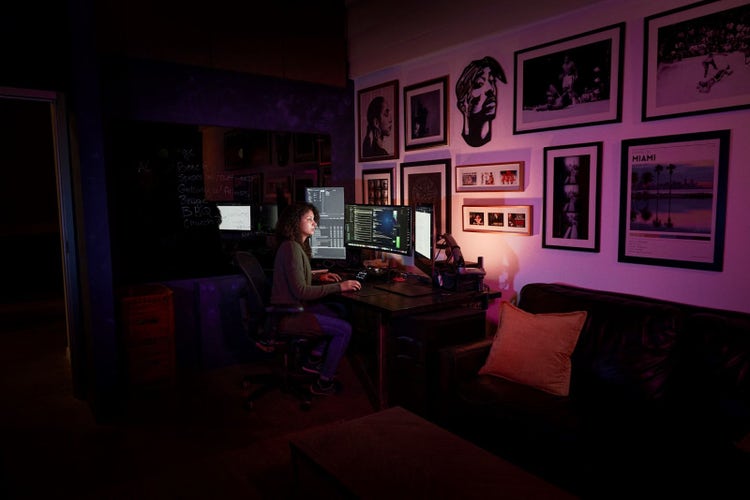Free to Run, a Dream Lens Media film released this month by The North Face, follows the incredible work of UN Human Rights attorney — and avid endurance trail runner — Stephanie Case, who worked with a women’s group in Kabul, Afghanistan to co-found an organization devoted to bringing visibility to women in regions of conflict and empowering women through adventure sports. When the Taliban took over Afghanistan, Case worked to get her fellow organizers to safety — all while in the midst of training for the Tor de Glacier, where she would eventually place third overall.
St. Louis-based editor Jazzy Kettenacker used Premiere Pro and Frame.io extensively to edit and share cuts for feedback. With footage being shot in Afghanistan and Italy, and the production team living in different places around the globe, a cloud-based workflow was essential for ensuring content could be shared, reviewed, and updated quickly and easily. Read on below as Jazzy shares her favorite Adobe Creative Cloud and Frame.io tools, as well as advice for aspiring filmmakers and tips for creating a healthier work-life balance — and check out the documentary below.
How and where did you first learn to edit?
I first learned to edit my freshman year of college at Hollins University. I completely switched over to Premiere Pro in 2013 after college. I haven't switched since.
How do you begin a project/set up your workspace?
When I first begin a new project, I like to throw all my footage onto a timeline, splitting them up either by shoot days or topics. I watch all the footage first before cutting, making sure I'm not missing out on any big or small moments. I'll mark and highlight as much as I can on my sequences.
Tell us about a favorite scene or moment from this project and why it stands out to you.
One of my favorite moments of Free to Run is when the main subject of the film, Stephanie Case, is pushing through the toughest part of Tor des Glaciers. Even though she's hardly had any sleep and her feet were killing her on this 450km journey, she didn't once think about giving up. This moment really displays her mental and physical toughness.
What were some specific post-production challenges you faced that were unique to your project? How did you go about solving them?
The biggest challenge we faced was figuring out how to tell a story in 30 minutes with TONS of footage. We had about 80 hours of footage shot by the directors and their crew, which doesn't include all the news footage we had to watch for the news montage sequence of the film. It's the most footage I ever had to work with.






